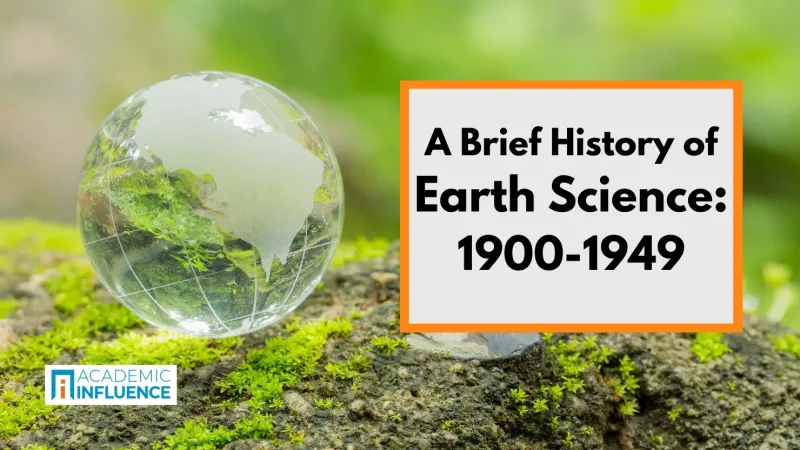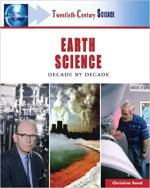A Brief History of Earth Sciences: 1900-1949

We explore the field of earth science from 1900-1949.
Much like as happened with other fields of study, Earth Sciences experienced a flurry of activity in the first half of the twentieth century, driven by exciting new discoveries. Chief among these new discoveries was a basic understanding of radioactive decay and the use of that nascent understanding to shed light into other areas of inquiry. In 1903, Pierre and Marie Curie shared the newly founded Nobel Prize with Henri Becquerel for the discovery and methods associated with radioactivity. The result for Earth Sciences was that researchers finally had a tool for dating the age of various parts of the Earth’s crust.


Key players in the quest to use radioactive decay as a method for obtaining the age of different stratigraphic layers were Bertram Boltwood (1870-1927) and Arthur Holmes (1890-1965). Boltwood determined that the uranium ultimately decayed into lead, so the amount of lead in a mineral that normally contains only uranium determines the time that passed since the original mineral was formed. Holmes took this insight and actually determined dates for the beginning and ending of the Carboniferous, Devonian, and Silurian periods. His results, published in 1913, still fit the range of dates accepted today for those three periods.
Tree-ring dating, or dendrochronology, also was developed during this time by Andrew Douglass (1867-1962). This tool provided a look back into the weather patterns of the ancient world. Carbon-14 radiocarbon dating was made possible by Boltwood’s discovery of isotopes as well as the insight, from Willard Libby (1908-1980), that C-14, so the amount of lead in a mineral that normally contains only uranium determines the time that passed since the original mineral was formed. Holmes took this insight and actually determined dates for the beginning and ending of the Carboniferous, Devonian, and Silurian periods. His results, published in 1913, still fit the range of dates accepted today for those three periods.
As radioactive decay was being used to establish the age of the geological column, Milutin Milankovitch (1879-1958) was publishing his culminating work on the amount of sunlight that hit the earth during various periods in its history. The cyclical pattern of greater and lesser amounts of sun energy striking the earth’s surface, now fittingly called Milankovich cycles, wonderfully explained past glacial and interglacial periods. Combining these cycles with a variety of other factors—natural and, more recently, man-made—determines the average temperature on earth.
A final discovery in the first half of the 20th century was the origin of the earth’s magnetic field. For millennia sailors relied on magnetic fields to guide them on their intercontinental journeys. But where do these fields come from? The key player in answering this question was Walter M. Elsasser (1904-1991), who cut his teeth in the fields of nuclear physics and meteorology.
When he applied to molten rock all that he had learned about how the prevailing winds respond to the Coriolis effect, the result was a 1939 paper “On the Origin of the Earth’s Magnetic Field” and another in 1946 titled, “Induction Effects in Terrestrial Magnetism.” This second paper, and two that followed, gave future scientists a framework for calculating how the swirling currents of metallic fluids carried the electric currents that, like the electromagnets children make in school, cause a stable magnetic field. At last, humanity could point to the geophysical cause of the fields that had been their guides for so many years!
Find out which influencers have most contributed to advancing the field of Earth Sciences over the last two decades with a look at The Most Influential People in Earth Sciences, for the years 2000–2020.
And to find out which schools are driving the Earth Sciences field forward today, check out The Most Influential Schools in Earth Sciences for the years 2000-2020.
Or, continue exploring the fascinating history of the Earth Sciences discipline with a look at a Brief History of Earth Sciences: 1950-1999.
Get more study tips, learning tools, and study starters with a look out our Complete Library of Study Guides.
Or jump to our student resource library for tips on everything from studying to starting on your career path.